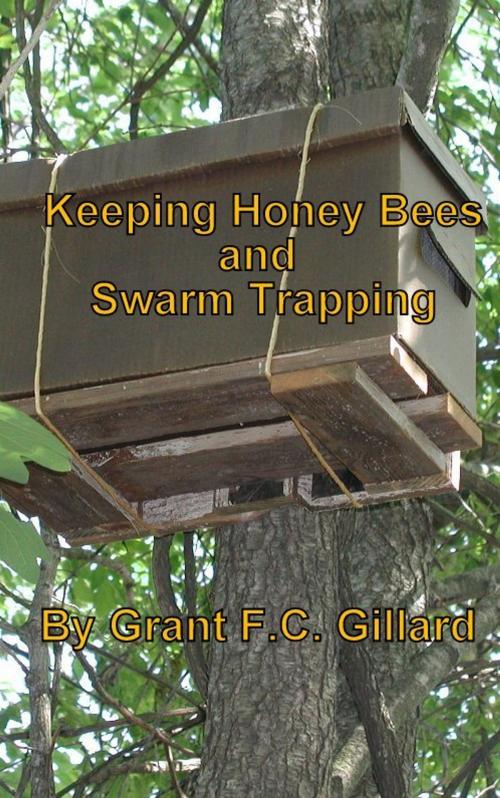| Author: | Grant Gillard | ISBN: | 9781465986238 |
| Publisher: | Grant Gillard | Publication: | February 15, 2012 |
| Imprint: | Smashwords Edition | Language: | English |
| Author: | Grant Gillard |
| ISBN: | 9781465986238 |
| Publisher: | Grant Gillard |
| Publication: | February 15, 2012 |
| Imprint: | Smashwords Edition |
| Language: | English |
The concept of trapping swarms is very simple. The title, however, of “trapping” swarms brings up some strange ideas of fatal mouse traps (a quick and “humane” death) or even those “have-a-heart” style traps that keep the animals contained but healthy.
A swarm trap is not really a trap. It’s a box, a bucket, a drum or some other attractive cavity that represents a temporary home for the bees. If you are familiar with beekeeping, a five-frame “nuc” box is often used to “trap” a swarm. If you can imagine a five-frame nuc box nailed to the side of a tree or tied onto the lower side of a large branch, then you have an idea of the simplicity of a swarm trap.
There are two, key characteristics of swarm traps. First, they are temporary, and second, they are made to be attractive to the scout bees. Its attractiveness is based on the size and volume, defendability (the entrance or opening should not too large), height off the ground and smell. You can use any box or cavity, and the most popular, commercially made swarm trap available in the supply catalogs looks like a wood-fiber flower pot.
I prefer my traps to look like boxes so I can place standard-sized brood frames in them. The swarm moves in and begins to draw out the foundation and the queen starts laying eggs. With box-style traps, I can take that swarm trap to the bee yard and transfer the frames of brood and bees to a normal hive body.
The transfer process is not difficult which makes a box-style swarm trap ideal.
The concept of trapping swarms is very simple. The title, however, of “trapping” swarms brings up some strange ideas of fatal mouse traps (a quick and “humane” death) or even those “have-a-heart” style traps that keep the animals contained but healthy.
A swarm trap is not really a trap. It’s a box, a bucket, a drum or some other attractive cavity that represents a temporary home for the bees. If you are familiar with beekeeping, a five-frame “nuc” box is often used to “trap” a swarm. If you can imagine a five-frame nuc box nailed to the side of a tree or tied onto the lower side of a large branch, then you have an idea of the simplicity of a swarm trap.
There are two, key characteristics of swarm traps. First, they are temporary, and second, they are made to be attractive to the scout bees. Its attractiveness is based on the size and volume, defendability (the entrance or opening should not too large), height off the ground and smell. You can use any box or cavity, and the most popular, commercially made swarm trap available in the supply catalogs looks like a wood-fiber flower pot.
I prefer my traps to look like boxes so I can place standard-sized brood frames in them. The swarm moves in and begins to draw out the foundation and the queen starts laying eggs. With box-style traps, I can take that swarm trap to the bee yard and transfer the frames of brood and bees to a normal hive body.
The transfer process is not difficult which makes a box-style swarm trap ideal.















